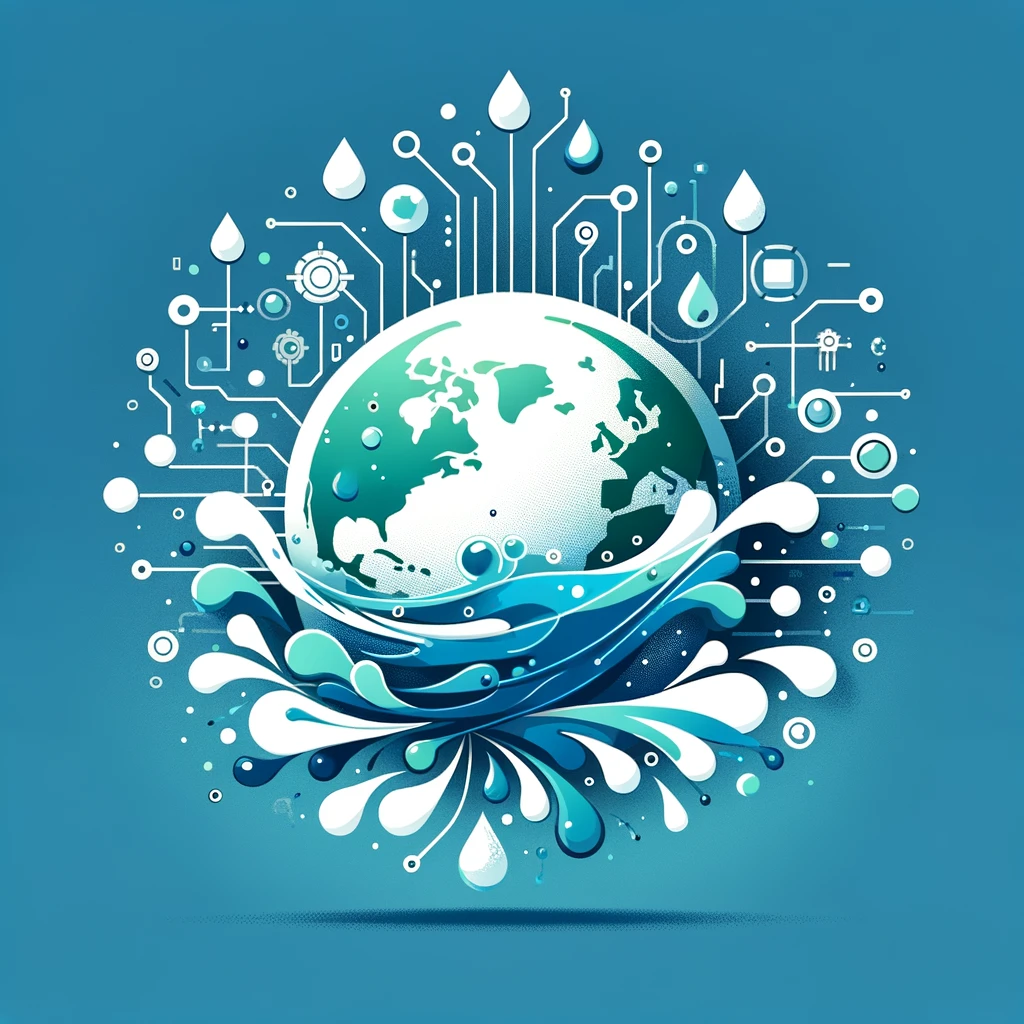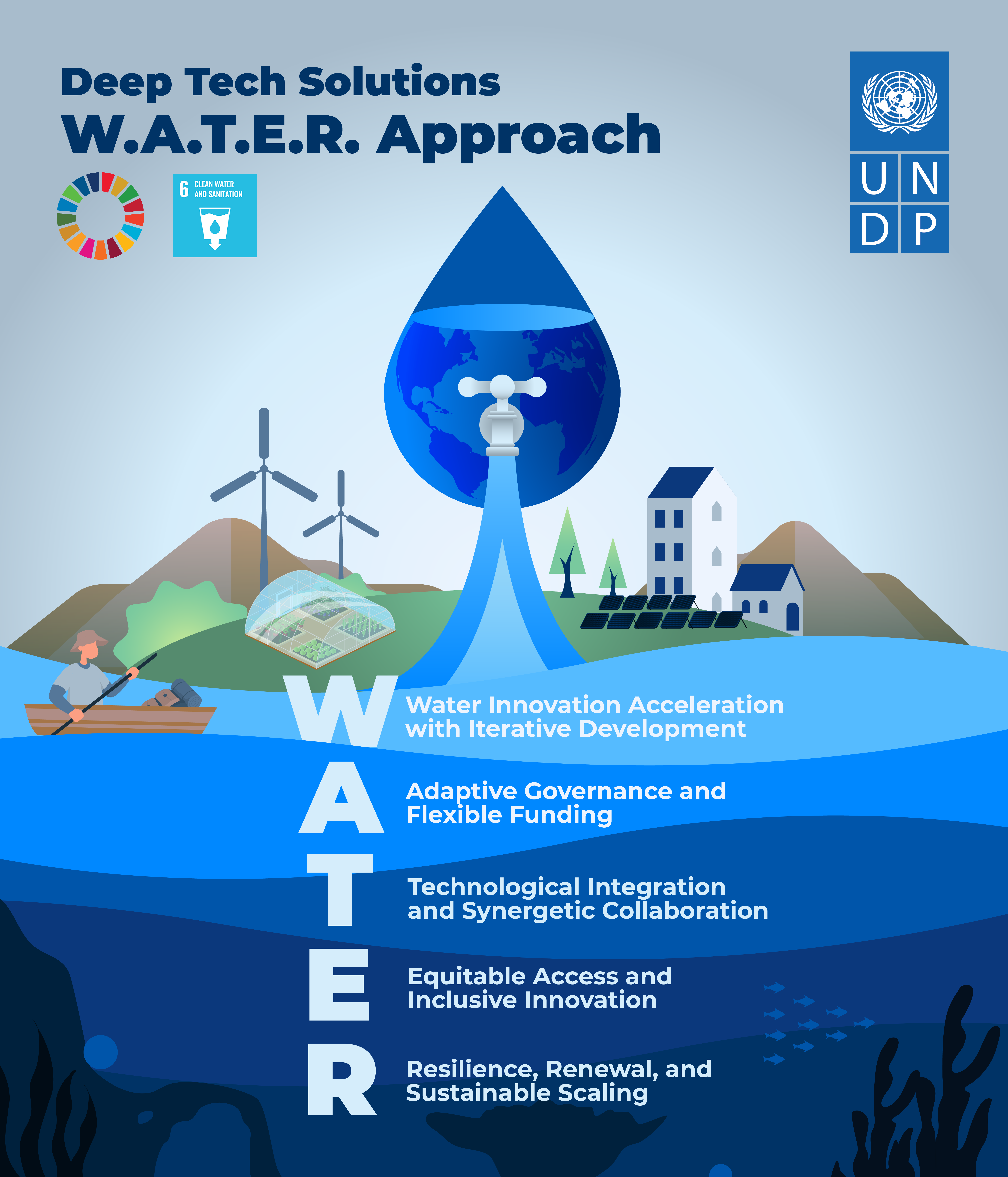Deep Tech Series Vol. 4: Thirst for Innovations - Deep Tech for Global Water Challenges
March 20, 2024

"As humanity’s most precious global common good, water unites us all… All of humanity’s hopes for the future depend, in some way, on charting a new science-based course to bring the Water Action Agenda to life."
-- António Guterres, UN Secretary-General
Water is the lifeblood of our planet, an essential resource that is irreplaceable and fundamental to every aspect of human and ecological survival. Freshwater scarcity has emerged as a pressing global challenge. As of 2023, approximately 2 billion people, most of whom live in Sub-Saharan Africa, need access to safe drinking water. Despite Earth's abundant oceans, only 0.5% of all water is usable and available as freshwater. The ripple effects of water issues impact not just human health but also biodiversity and the global ecosystem at large. In 2019, inadequate access to safe water, sanitation, and hygiene (WASH) services was linked to 1.4 million deaths and accounted for 74 million disability-adjusted life years (DALYs) globally. Over 80% of global wastewater flows untreated into water bodies, exacerbating pollution and further straining water quality. Additionally, agriculture, serving as a primary source of income, food, and economic security for 80% of the world's poor, consumes about 72% of global freshwater withdrawals in 2023, predominantly in low-income countries.
Deep tech - the most cutting-edge and often disruptive technologies that are built on scientific discoveries and engineering prowess - can potentially address some of the most pressing water challenges. For example, hydropanels represent a pioneering renewable water technology that leverages solar power to harvest clean, pollutant-free drinking water directly from the air—even under arid conditions with relative humidity as low as 5%. These hydropanels utilize nanostructured composite materials that combine traditional solid desiccants’ rapid water absorption properties with the liquid salt-based desiccants’ high water-holding capacity. Operating without electricity, hydropanels are being deployed worldwide, benefiting over 50 countries by supplying essential water to schools in Mexico, communities of Syrian refugees in Lebanon and Jordan, and fire stations in hurricane-stricken Puerto Rico.
Deep tech innovations like the Superabsorbent hydrogel (SAH) and zwitterionic membrane technology present transformative solutions for managing water scarcity and purification in agriculture and industry. A novel SAH, developed from soy, can swell to over 150 times its size. It acts as soil mini-reservoirs that reduce watering needs and could transform farming in dry areas by improving crop resilience and water efficiency, potentially improving food security for millions. On another front, innovative zwitterionic membrane technology is designed to tackle industrial wastewater's stubborn contaminants using zwitterionic polymers. These polymers effectively repel grease, oils, and proteins, preventing membrane degradation and enabling the treatment of highly contaminated wastewater from industries like dairies and pharmaceuticals.
In addressing global water challenges, UNDP champions innovation through the Ocean Innovation Challenge (OIC), promoting cutting-edge technologies for sustainable environmental solutions. OIC's initiatives, like AquaInSilico's wastewater treatment solution, demonstrate UNDP's commitment to enhancing water quality and conservation by harnessing advanced technologies. This technology uses a sophisticated mathematically-modeled biological approach for efficient phosphorus removal, minimizing chemical use, energy, and environmental risks. Its successful pilot in Cape Verde, supported by UNDP, showcases the potential to improve wastewater management in Small Island Developing States (SIDS), addressing issues like coastal eutrophication. By enabling the repurposing of treated wastewater for agriculture, AquaInSilico's technology significantly reduces treatment costs, boosts freshwater resources, and protects vital marine ecosystems, illustrating a path forward for environmental resilience and sustainability.
In the face of escalating global water challenges, especially within developing countries, the W.A.T.E.R. Approach, drawn from the OIC's practical experiences, could offer an actionable blueprint for testing, deploying, and scaling cutting-edge solutions like deep tech in the water sector.
W - Water Innovation Acceleration with Iterative Development
Urgent global water threats demand the quick yet thorough piloting and testing of cutting-edge solutions, emphasizing the need for swift iterations and constant enhancement. This approach involves a cycle of prototyping, testing, feedback, and refinement, supported by a collaborative environment, diverse long-term funding, and knowledge-sharing platforms. Singapore exemplifies this strategy with its smart water management system, where the National Water Agency collaborates with startups to integrate deep tech in monitoring and managing water resources, demonstrating a proactive approach to adopting and advancing new technologies through its four national taps strategy.
A - Adaptive Governance and Flexible Funding Mechanisms
Deep tech's path from development to deployment in the water sector would require adaptive governance that can accommodate the sector's fast-paced evolution and the need for significant, often risky, investments. This could include establishing flexible funding mechanisms that provide patient capital—investments that are prepared for the long haul, and understanding the gestation period deep tech projects require before demonstrating viable returns. Policies should also evolve to support the iterative nature of deep tech, enabling the integration and scaling of successful innovations while managing the risks associated with new technological frontiers.
T - Technological Integration and Synergetic Collaboration
The potential of deep tech in addressing water challenges could only be unleashed through integrating of technological innovations with social and policy measures. Bridging the gap between scientists, policymakers, entrepreneurs, communities, and investors is essential for fostering impactful collaborations. Users of deep tech water solutions need access to the expertise and tools they need. This means activating a broad network of contributors – human expertise, technological resources, and diverse users. Such synergies would maximize the potential for widespread application and ensure that technological solutions are scientifically sound, socially inclusive and economically viable.
E - Equitable Access and Inclusive Innovation
The principle of water security for all is central to the mission of solving water challenges. Deep tech solutions should aim to democratize access to clean water, prioritizing the needs of marginalized and vulnerable communities. Ensuring equitable access to water resources demands adopting inclusive water management practices rooted in equity and justice. Equity in innovation also means developing business models and distribution strategies that make solutions accessible and affordable to those who need them most, ensuring that the benefits of technology are widely and fairly distributed.
R - Resilience, Renewal, and Sustainable Scaling
Building resilient water systems with deep tech would involve a commitment to sustainability and the capacity for renewal. This principle highlights the importance of designing solutions that are effective in the short term and sustainable and scalable in the long run. This could include leveraging deep tech for predictive analytics, enhancing ecosystem protection through bio-inspired designs, and ensuring systems are flexible enough to incorporate ongoing technological upgrades. Nature-based solutions, supported by deep tech for monitoring and management, are critical in sustaining water resilience.

This is the fourth blog of the Deep Tech Series. Click here for the full list of blogs.

 Locations
Locations

